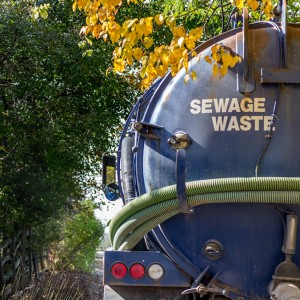The impact of water softening on septic tanks
Water softeners and septic tanks—who knew that the two are linked? For homes that have a septic system and use a water softener, it’s been shown that efficiently operated water softeners pose no problems to septic tank performance.[1] Additionally, over half of homes with a septic system also have a water softener.
But wait. What, exactly, is an efficiently operated water softener and how could it improve septic performance? Let’s take a look at the nature of a septic tank and how a water softener fits in.
Septic systems at a glance
Using a septic system is common for households in rural areas without centralized sewer systems. This system treats wastewater from the bathrooms, kitchen drains and laundry. Septic systems have four basic functions:
- Receive wastewater
- Separate solid materials from the wastewater
- Provide partial treatment of wastes
- Release treated wastewater into drain fields
These functions work in tandem to provide an effective solution to wastewater management.
A water softener’s impact
Water softeners come in two types: demand-initiated regeneration (DIR) and timer-based systems. A demand-initiated water softener uses your water usage and average water hardness to determine when to regenerate (versus a predetermined timeframe that may or may not be accurate) and is considered a more efficient model that conserves water, energy and salt use. It’s also the best system for homes with septic tanks. Here’s why:
- The amount of water discharged by a DIR system is equivalent to a load of laundry and is easily within the limits of what a septic system can handle. And because a DIR softener only regenerates when needed, the system is not overloaded with softener backwash.
- The discharged solution of a DIR system has a greater ratio of calcium and magnesium ions to sodium. Larger amounts of calcium and magnesium can actually help improve the time it takes for treated wastewater to be absorbed in the drain fields.
- Water softeners also help homeowners use up to 50% less soap and reduce overall water usage, which reduces the overall load on the septic system significantly.
Helping your home inside and out
Septic systems are one of those household systems that just magically seem to operate (hey, out of sight, out of mind). However, there are factors that can impact their ability to run efficiently and cleanly. An undersized septic tank or excessive use of cleaning products is more likely to disrupt the normal operation of your system than a water softener. If your home currently has a water softener, consider the regeneration style (DIR or timer-based) and age of the water softening system—it may be time for an upgrade. Timer-based water softeners and systems that are between 10 and 15 years old are generally considered outdated and past their prime.
With an easy step-by-step tool, you can determine the best water softening solution for your in-home water needs, with the added bonus of improving the efficiency of your septic system.
[1]Based on research conducted by scientists at the University of Wisconsin–Madison, the National Sanitation Foundation, and the Water Quality Research Foundation.










